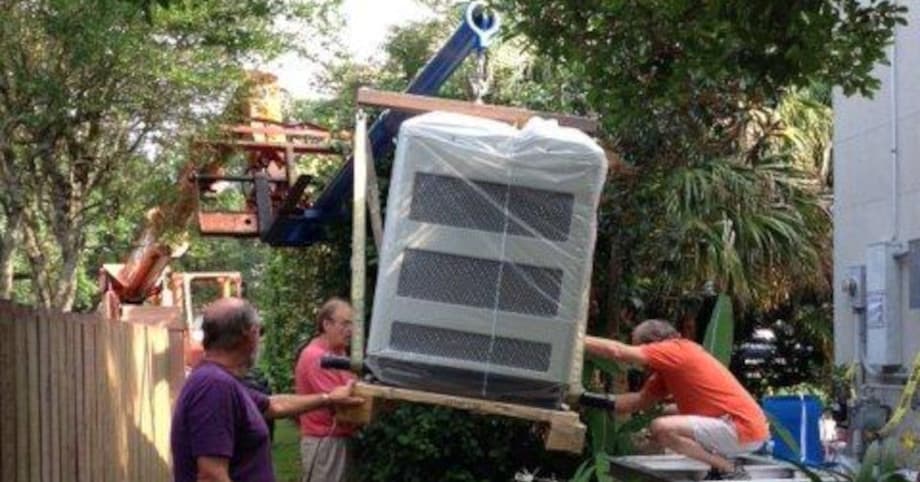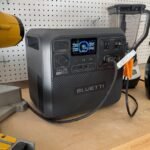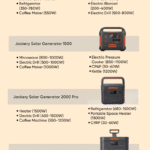Disclosure: This post contains affiliate links and I will be compensated if you make a purchase after clicking through my links. Learn More
Yes, you can take a Generac generator when you move. Proper preparation and careful handling ensure safe transportation.
Moving a Generac generator requires some planning and effort. First, check the generator’s condition and ensure it is properly serviced. This includes draining fuel and securing loose parts. Proper packaging and using the right equipment for lifting and moving can prevent damage.
Additionally, following local regulations for transporting hazardous materials is crucial. Understanding these steps ensures your generator arrives safely at your new home, ready for use. Whether moving across town or to a different state, careful planning can make the process smooth and stress-free.

Assessing The Generator
Moving to a new home can be stressful. It’s important to assess whether your Generac generator should come with you. Assessing your generator’s condition, size, and capacity ensures it will meet your needs in the new location.
Condition Check
Start by examining the condition of your Generac generator. Look for any visible wear and tear. Check for rust, leaks, and broken parts. Ensure all components are intact.
Regular maintenance is key. Check the maintenance logs if available. Ensure the generator has been serviced regularly. This helps in identifying potential issues.
Use the table below to guide your inspection:
| Component | Condition |
|---|---|
| Engine | No leaks, rust-free |
| Battery | Fully charged, no corrosion |
| Fuel System | Clean, no blockages |
| Exhaust | Clear, no damage |
Size And Capacity
Evaluate the size and capacity of your generator. Check if it meets the power demands of your new home. A small generator may not be sufficient for a larger home.
Review the generator’s wattage. Compare it with your household’s power requirements. This includes essential appliances and electronics.
Use the following points for guidance:
- Calculate total wattage needed.
- Compare with generator’s capacity.
- Check for any additional power needs.
If the generator is too small or too big, reconsider taking it. A mismatch in capacity can lead to inefficiency and potential damage.
Legal And Safety Considerations
Moving a Generac generator involves more than just logistics. You must consider legal and safety aspects. These are crucial to ensure a smooth and safe transition.
Local Regulations
Relocating Generac generators requires careful attention to local regulations. Municipal and county authorities establish specific rules governing generator placement and movement. Homeowners must research and understand local permit requirements before initiating any generator transfer. Zoning regulations often dictate precise guidelines for generator positioning, noise limitations, and safety standards.
Some jurisdictions mandate professional inspections or written approvals before generator repositioning. Potential requirements may include property setback distances, electrical connection standards, and environmental compliance documentation. Consulting local building departments or municipal offices provides the most accurate, up-to-date information about generator relocation protocols.
Safety Precautions
Safety is paramount when moving a generator. Follow these steps to ensure safety:
- Disconnect Power: Ensure the generator is off and unplugged.
- Inspect for Leaks: Check for fuel or oil leaks.
- Use Proper Equipment: Utilize the right tools for moving.
- Secure During Transit: Make sure the generator is stable in the vehicle.
Adhering to these steps helps prevent accidents. Always prioritize safety first.
Preparing For The Move
Moving to a new house involves many tasks. One task is preparing your Generac generator for the move. Proper preparation ensures safety and efficiency.
Disconnecting The Generator
Start by turning off the generator. Use the main switch to do this. Next, disconnect the power supply. Remove the fuel source carefully. If your generator connects to your home’s electrical system, hire a professional electrician. They will ensure safe disconnection. Label all cables and wires. This will help during reinstallation at your new home.
Cleaning And Maintenance
Before moving, clean your generator. Remove any dust and debris. Use a soft cloth and mild detergent. Check the oil level. If it is low, refill it. Inspect the air filter. Clean or replace it if necessary. Ensure all bolts and screws are tight. This prevents damage during transport. Follow the maintenance guide in your user manual.
Transportation Tips
Transporting a Generac generator during a move requires careful planning. Proper handling ensures safety and prevents damage. Follow these transportation tips to make the process smooth and hassle-free.
Packing The Generator
First, clean the generator thoroughly. Remove any dirt or debris. This prevents damage during the move. Next, drain the fuel to avoid leaks. Refer to the user manual for specific instructions.
Wrap the generator in a protective cover. Use blankets or bubble wrap to cushion it. Secure the cover with strong tape. This protects the generator from scratches and impacts.
Consider using a heavy-duty pallet. Place the generator on the pallet and fasten it with straps. This makes lifting and moving easier. It also provides a stable base during transport.
Choosing The Right Vehicle
Select a vehicle with enough space for the generator. A truck or a large van is ideal. Ensure the vehicle can handle the generator’s weight. Check the vehicle’s load capacity before loading the generator.
Use a ramp to load the generator safely. Avoid lifting the generator manually to prevent injuries. Secure the generator inside the vehicle. Use tie-down straps or bungee cords to keep it in place.
Ensure proper ventilation in the vehicle. This prevents the buildup of fumes if any fuel is left. Drive carefully to avoid sudden stops or sharp turns. This keeps the generator stable and prevents damage.
Installation At New Location
Moving to a new home? Wondering if you can take your Generac generator? Yes, you can! But, installing it in a new location requires some steps. Let’s break down the process.
Site Assessment
First, assess the new site. Check the space for the generator. Make sure it’s away from windows and doors. This keeps your home safe. Look at the ground. It should be level and solid. A concrete pad is ideal. This helps to keep the generator stable.
Professional Help
Next, get professional help. An electrician and a plumber are needed. They ensure the generator connects properly. This includes wiring and gas lines. They also follow local codes. This avoids fines and keeps your home safe.
Here is a quick checklist:
- Check space for generator
- Ensure it’s away from windows and doors
- Look for level and solid ground
- Consider a concrete pad
- Hire an electrician
- Hire a plumber
- Follow local codes
Proper installation is key. It ensures your generator works well. It also keeps your home safe.
Cost Implications
Understanding the cost implications of moving a Generac generator is crucial. This section will break down the associated costs into two main categories: Moving Costs and Installation Costs. Knowing these costs helps you plan better and avoid unexpected expenses.
Moving Costs
Moving a Generac generator involves several expenses. Here’s a breakdown:
- Transportation Fees: Generators are heavy and require special handling. Expect higher transportation fees.
- Labor Costs: You might need professionals to disconnect and reconnect the generator. This adds to labor costs.
- Insurance: Consider insuring your generator during the move. This protects you from potential damages.
Installation Costs
Reinstalling your Generac generator at the new location also incurs costs. Here are the key factors:
| Cost Factor | Description |
|---|---|
| Site Preparation | Preparing the site for installation may involve landscaping or electrical work. |
| Electrician Fees | A licensed electrician will be needed to ensure proper installation. |
| Permits | Some areas require permits for generator installation. Check local regulations. |
Considering both moving and installation costs can help you make an informed decision. This way, you can budget accordingly and ensure a smooth transition for your Generac generator.
Alternative Options
When moving homes, taking your Generac generator might be challenging. But there are alternative options to consider. These choices can be more convenient and cost-effective.
Selling The Generator
Selling your generator can be a smart move. Here are some benefits:
- Recoup some of your investment
- Save on moving costs
- Avoid the hassle of uninstalling and reinstalling
To get the best price, ensure the generator is in good condition. Clean it thoroughly and fix any minor issues.
Consider these platforms for selling:
- Online marketplaces like eBay and Craigslist
- Local classifieds
- Specialized equipment websites
Renting A New One
Renting a generator at your new location can be a viable option. Here are the advantages:
- No need for a large upfront cost
- Flexibility to choose the right size for your new home
- Access to the latest models with advanced features
When renting, consider the following factors:
| Factor | Details |
|---|---|
| Duration | Short-term or long-term rental options |
| Support | Maintenance and technical support services |
| Cost | Compare prices from different rental companies |
Renting can offer peace of mind and ease during your transition.

Frequently Asked Questions
Can You Move A Generac Generator?
Yes, you can move a Generac generator. Ensure it is safely disconnected and properly prepared for transport.
How To Prepare Generac Generator For Moving?
First, disconnect all connections. Drain fuel and oil. Secure loose parts. Follow the manufacturer’s guidelines for safe handling.
Does Moving Void Generac Generator Warranty?
Moving a Generac generator typically does not void the warranty. Check the warranty terms or contact Generac for confirmation.
Can Professionals Move Generac Generators?
Yes, hiring professionals to move your Generac generator ensures safety and compliance with manufacturer guidelines. They have the right tools and expertise.
Final Thoughts
Moving with a Generac generator is possible with proper planning. Ensure you follow safety guidelines and local regulations. Consult a professional for installation in your new home. This helps guarantee a seamless transition. Remember, a portable generator can be a valuable asset in your new location.
Happy moving!








